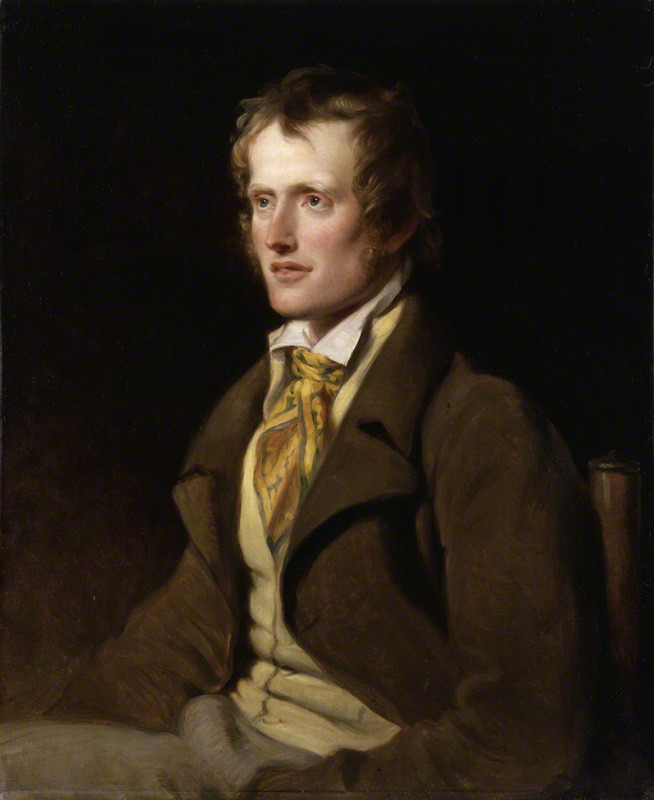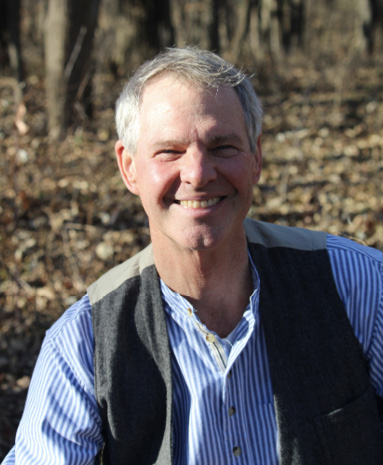In 1841, the English poet John Clare (1793-1864) was pronounced insane and committed to an asylum, where he spent the rest of his life. In other ways, also, Clare was not typical of English poets of his generation whose ranks included John Keats, Percy Bysshe Shelley, and Lord Byron; or of the preceding generation’s William Wordsworth, Sir Walter Scott, and Samuel Taylor Coleridge; or the next generation’s Alfred, Lord Tennyson, Robert Browning, and Matthew Arnold. Unlike all of them, sons of privilege and mostly educated at Oxford or Cambridge, 1 Clare’s origins were strictly plebian. His father was a farm laborer, a “flail thresher.” The son in childhood took up his father’s farm work, and his education in the local church ended at the age of 12. The father’s failing health created economic hardship for the family, and it is speculated that Clare’s short five-foot stature may have resulted from malnutrition in childhood. He also worked as a potboy in a public house, a gardener, and a lime burner to try to make ends meet. He married a milk maid. At the age of 25 Clare was compelled to accept parish relief.

John Clare, an 1820 painting by William Hilton, oil on canvas.
Yet John Clare became a poet, and in fact a very fine poet. He wrote about what he knew: rural life, the animals and plants of the English countryside, and the damage to these wrought by the Industrial Revolution. Somehow, he came to the attention of literary England, and his first book of poetry was published when he was 27 by Taylor and Hessey, the firm that had published Keats. As a young writer Clare was lionized as “the Northamptonshire Peasant Poet.” His later work was less well-received, however, and for nearly a century and a half he was little more than a footnote in English letters, though his star seems to be rising again. His recent biographer, Jonathan Bate, describes Clare as “the greatest laboring-class poet that England has ever produced. No one has ever written more powerfully of nature, of a rural childhood, and of the alienated and unstable self. 2”
I was introduced to Clare’s poetry through a delightful book, The Nightingale: Notes on a Songbird (2023, Penguin Books), by Sam Lee. Clare is included because he wrote a poem about nightingales. So did Keats and, it turns out, a lot of poets, English and otherwise. What intrigued me most about Lee’s discussion of Clare was his point that Clare was not simply a casual observer of nightingales–and of nature more generally–rather, he wrote about nature from intimate knowledge.

Clare’s birthplace and residence during the early part of his life; his family rented a portion of the cottage (a modern photo of his restored cottage)
To illustrate what this might mean, let me first quote the opening lines of Keats’s famous “Ode to a Nightingale” (1819):
My heart aches, and a drowsy numbness pains
My sense, as though of hemlock I had drunk,
Or emptied some dull opiate to the drains
One minute past, and Lethe-wards had sunk:
‘Tis not through envy of thy happy lot,
But being too happy in thy happiness –
That thou, light winged Dryad of the trees,
In some melodious plot
Of beechen green, and shadows numberless,
Singest of summer in full-throated ease.
Wonderful verse, but more about Keats than about nightingales. “Ode” is a meditation upon mortality and the transience of the physical life, with the nightingale’s song a kind of symbol of immortality.

The Northamptonshire countryside. Photo courtesy of essentially-england.com
Clare, in “The Nightingale’s Nest” (1835), tells of going in search of the nightingale in a spot “where I’ve heard her many a merry year”:
There have I hunted like a very boy,
Creeping on hands and knees through matted thorn
To find her nest and see her feed her young.
And vainly did I many hours employ:
All seemed as hidden as a thought unborn.
And where those crimping fern-leaves ramp among
The hazel’s under-boughs, I’ve nestled down
And watched her while she sung, and her renown
Have made me marvel that so famed a bird
Should have no better dress than russet brown.
Like Keats, Clare is drawn to the nightingale’s enchanting song, but he is just as interested in the rest of the bird: its nest, its eggs, its young, its habitat, its unremarkable appearance. Clare gets “on hands and knees” to carefully observe these things, and one can imagine him patiently nestling down in the shrubbery for a glimpse of a particular bird in her particular nest. As Clare anthologist Paul Farley has pointed out, Clare himself noted how differently Keats wrote about nature than he did, who actually witnessed the things he describes. 3
My purpose here is not to elevate Clare’s nature poetry above Keats’s. The poems express different sensibilities and are based in different life experiences. Rather, I want to alert readers to a related aspect of Clare’s poetry: the attention he paid to the transformation of that nature that he had known in his youth and loved so well. In one untitled poem he laments “the old pond full of flags and fenced around,” and in another reports that “the mower tramples on the wild bees’ nest.” Stronger hints of destructive alterations in the land appear in this stanza from “The Lament of Swordy Well”:
I couldn’t keep a dust of grit
Nor scarce a grain of sand,
But bags and carts claimed every bit
And now they’ve got the land.
I used to bring the summer’s life
To many a butterfly,
But in oppression’s iron strife
Dead tussocks bow and sigh.
4
What is happening here? Broadly, Clare is lamenting the consequences of the enclosures of “common land” in Northamptonshire–and across England–accomplished by a series of Enclosure Acts that created procedures for converting the traditional open-field system of English agriculture to private, fenced properties. These consequences could include draining wetlands, cutting down trees, cultivating marginal lands, shifting to cash rent, increasing concentration of land ownership, and dispossessing smallholders. By increasing efficiency and productivity, the Enclosure Acts promoted the Agricultural Revolution in England, and at the same time released from agriculture a labor force that became available for the Industrial Revolution.
Clare does more, though, than deplore these changes. In a remarkable poem titled “The Lamentations of Round-Oak Waters,” he diagnoses the underlying agents of change. I quote only a portion of the longer poem:
Look backward on the days of yore
Upon my injur’d brook;
In fancy con its beauties o’er,
How it had us’d to look.
O then what trees my banks did crown,
What willows flourished here:
Hard as the ax that cut them down
The senseless wretches were.
But the hardened loggers, though “senseless,” were ultimately not to blame:
But sweating slaves I do not blame,
Those slaves by wealth decreed;
No: I should hurt their harmless name
To brand ‘em wi’ the deed.
Although their aching hands did wield
The axe that gave the blow,
Yet ‘t’was not them that owned the field
Nor plan’d its overthrow.
No, no: the foes that hurt my field
Hurt those poor moilers too,
And thy own bosom knows and feels
Enough to prove it true,
And o poor souls they may complain
But their complainings all
The injured worms that turn again
But turn again to fall.
Their foes and mine are lawless foes
And laws themselves they hold
Which clipt-wing’d justice can’t oppose
But forced, yields to gold.
These are the foes of mine and me;
These all our ruin plan’d
Although they never fell’d a tree
Or took a tool in hand.
Thus does John Clare boldly call out the wealth-and-power elite of his time and place.

Northamptonshire workers (a 19th century print). Courtesy of Getty Images
Clare would have well-understood the changes that led to the degradation of the North American tallgrass prairie, changes which were well underway in his own lifetime, though he may not have been aware of them. Good accounts of those changes can be found in John Madson’s Where the Sky Began: Land of the Tallgrass Prairie and Cornelia Mutel’s Emerald Horizon: The History of Naure in Iowa. The changes are handily summed up in two statistics: in 1840, 80 percent of the land that a few years later became the state of Iowa was covered by tallgrass prairie; fast-forward 150 years and less than 0.1 percent of that prairie remained. 5
As in Clare’s Northamptonshire, the degradation of the tallgrass prairie occurred in the name of agriculture. Right from the start, in the 1830s and ‘40s, wealth-and-power elites manipulated the situation even as ordinary farmers did the menial work to yoke the oxen that drew “the plow that broke the plains.” 6 The role played in this by powerful institutions – governments, railroads, corporations – is too complex to summarize here, but it has led to the same kinds of environmental costs that Clare noted in Northamptonshire: draining of wetlands, cutting of trees, erosion of soil, loss of biodiversity, and more recently pollution of soil, water, and air by agrochemicals. And, again as in Northamptonshire, these same institutions have undermined small communities and a way of life.

Modern agricultural equipment spreading ag chemicals. Photo courtesy of onedegreeorganics.com.
In the Midwest, the latest phases of this process have been dissected in an arresting new book, Barons: Money, Power, and the Corruption of America’s Food Industry (2024: Island Press), by seventh generation Iowan, Austin Frerick. In detail, Frerick reveals the ways in which a handful of families have acquired disproportionate control over the food the rest of us eat, and in the process become fabulously wealthy. The main through line that connects Frerick’s prose about the Midwest and Clare’s poetry about Northamptonshire is the way the wealth and power of the few strips autonomy from the many. Perhaps this realization was why John Clare lost his sanity. Reading Frerick’s book, I wonder for how much longer we will be able to maintain our own.
1 Keats was a partial exception. Although his mother left him a share of an £ 8,000 legacy, he probably never received it. Throughout his short life, money was always in short supply.
2 Jonathan Bate (2003). John Clare: A Biography. New York City: Farrar, Strauss and Giroux.
3 Paul Farley (2016), John Clare Poems. London: Faber & Faber Ltd.
4 ibid.
5 Daryl Smith, Iowa prairie: original extent and loss, preservation, and recovery attempts. Journal of the Iowa Academy of Sciences 105(3): 94-108 (1998)
6 The title of a 1936 documentary film by Pare Lorenz about the cultivation of the Great Plains.


